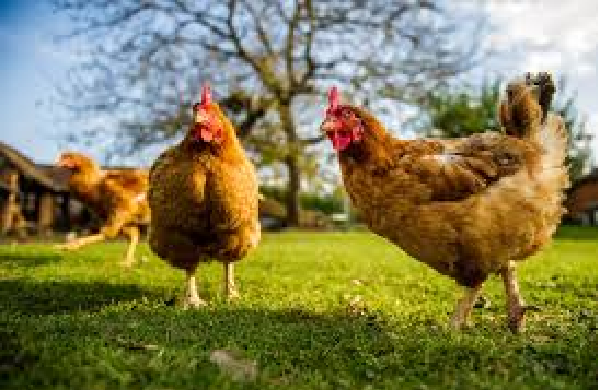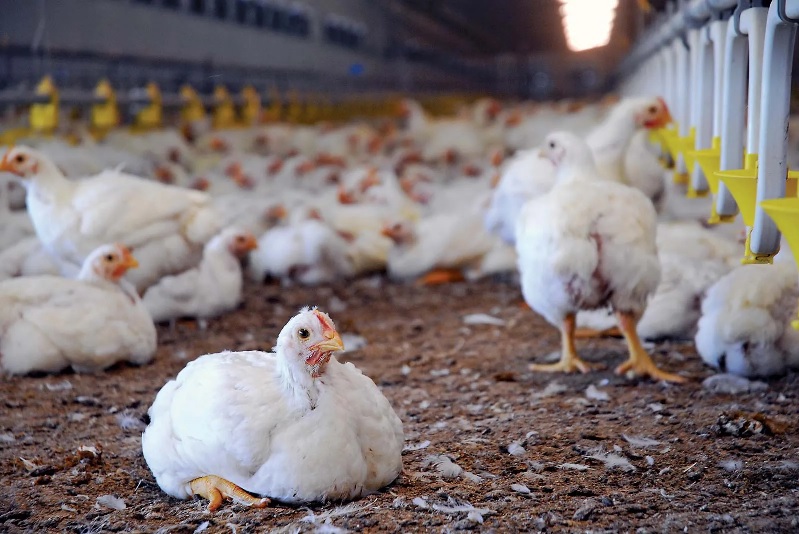Latest Disease Preventive Guide for Poultry Farms – Are you a poultry farmer in need of the Latest Disease Preventive Guide for Poultry Farms? This article is for you. This a well-researched article for poultry farmers.
So, welcome to the latest disease preventive guide for poultry farms, where we provide you with essential information and strategies to ensure the health and well-being of your flock. As a poultry farmer, it is crucial to stay informed about the latest advancements in disease prevention to protect your birds from potential outbreaks and maintain a thriving and profitable operation. In this comprehensive guide, we will explore key practices, biosecurity measures, and proactive steps you can take to safeguard your poultry farm against infectious diseases. By implementing these guidelines, you can minimize the risk of disease transmission, promote a healthy environment, and ultimately contribute to the success of your poultry farm. Get the Latest Disease Preventive Guide for Poultry Farms from this article.
Why Poultry Farmers Must Read This Article:
Table of Contents
In fact, we need all farmers to read this article – Latest Disease Preventive Guide for Poultry Farms. Do you know why? Absolutely! It is essential for all poultry farmers to read the latest disease preventive guide for several reasons. Here are a few key reasons why this article should be widely circulated among farmers:
Disease Awareness and Identification:
The guide provides valuable information on various diseases that can affect poultry farms, their symptoms, and how to identify them. By being aware of potential diseases and their signs, farmers can take prompt action and prevent the spread of infections within their flocks. Get the Latest Disease Preventive Guide for Poultry Farms from this article.
Preventive Measures:
The guide outlines preventive measures that farmers can implement to minimize the risk of disease outbreaks. These measures include proper biosecurity protocols, vaccination strategies, hygiene practices, and regular farm inspections. By following these guidelines, farmers can significantly reduce the likelihood of diseases affecting their poultry.
Economic Impact:
Disease outbreaks can have severe economic consequences for poultry farmers. They can result in increased mortality rates, decreased egg production, and compromised bird health, leading to financial losses. By adopting preventive measures, farmers can safeguard their investments and maintain a profitable operation. Get the Latest Disease Preventive Guide for Poultry Farms from this article.
Industry Reputation:
Disease outbreaks not only affect individual farms but can also impact the reputation of the entire poultry industry. Implementing disease preventive measures helps to maintain a positive image for the industry by demonstrating a commitment to animal welfare, biosecurity, and consumer safety.
Public Health Considerations:
Some poultry diseases can have zoonotic potential, meaning they can be transmitted from animals to humans. By following the disease preventive guide, farmers can reduce the risk of zoonotic disease transmission, protecting both their workers and the general public. Get the Latest Disease Preventive Guide for Poultry Farms from this article.
In general, the latest disease preventive guide for poultry farms is a crucial resource for all farmers as it provides valuable knowledge, strategies, and practices to safeguard their flocks, economic interests, industry reputation, and public health.
Latest Disease Preventive Guide for Poultry Farms
Comprehensive Guide to Disease Prevention in Poultry Farms – Preventing diseases is crucial in maintaining the health and productivity of poultry farms. Effective disease prevention measures are essential to minimize the risk of infectious outbreaks and ensure the welfare of the birds. This comprehensive guide aims to provide the latest disease-preventive strategies and best practices for poultry farms.
Biosecurity Measures:
Biosecurity plays a vital role in preventing the introduction and spread of diseases in poultry farms. The following measures should be implemented:
Restricted Access:
Control access to the farm by implementing secure perimeters and limiting entry to authorized personnel only. Visitors should follow strict protocols, such as wearing appropriate clothing and disinfecting footwear. Get the Latest Disease Preventive Guide for Poultry Farms from this article.
Isolation and Quarantine:
Isolate newly acquired birds from the existing flock for a specific period to monitor their health before integrating them. Quarantine any sick birds or those showing signs of illness immediately.
Equipment and Vehicle Sanitization:
Regularly clean and disinfect equipment, vehicles, and tools used on the farm to prevent disease transmission. Maintain a designated cleaning area for vehicles entering and leaving the premises.
Pest Control:
Implement effective pest control measures to prevent the entry of rodents, wild birds, and insects that can carry diseases. Regularly inspect and maintain the farm’s infrastructure to prevent entry points. Get the Latest Disease Preventive Guide for Poultry Farms from this article.
Personnel Hygiene:
All personnel should follow strict hygiene practices, including handwashing with soap and water, using disinfectants, and wearing clean clothing and boots. Provide appropriate training and enforce these practices consistently.
Vaccination Programs:
Vaccinations are a vital component of disease prevention in poultry farms. Work closely with a veterinarian to develop an effective vaccination program tailored to the specific diseases prevalent in your region. Keep accurate records of vaccinations administered to ensure timely and appropriate booster shots. Get the Latest Disease Preventive Guide for Poultry Farms from this article.
Disease Monitoring and Surveillance:
Regular monitoring and surveillance help detect and address potential disease threats before they escalate. Implement the following practices:
Regular Health Checks:
Conduct routine health checks on birds to identify any signs of illness promptly. Monitor their appetite, behavior, weight, and overall appearance.
Necropsies and Laboratory Testing:
Perform necropsies on any birds that die suddenly or show unusual symptoms. Collaborate with a veterinary diagnostic laboratory to conduct necessary tests to identify the cause of mortality or illness.
Sentinel Birds:
Use sentinel birds from different flocks to monitor and detect the presence of certain diseases on the farm. These birds should be placed strategically and regularly tested. Get the Latest Disease Preventive Guide for Poultry Farms from this article.
Environmental Monitoring:
Regularly test the farm environment, including water sources, feed, and litter, to identify any potential sources of contamination or disease spread.
Hygiene and Sanitation:
Maintaining high standards of hygiene and sanitation is essential to prevent disease outbreaks. Consider the following practices:
Clean Water and Feed:
Provide clean and uncontaminated water and feed to the birds. Regularly clean and disinfect waterers and feeders to prevent the growth of harmful bacteria.
Litter Management:
Manage and regularly replace litter to prevent the buildup of pathogens and ammonia. Proper ventilation is also critical to maintain optimal air quality. Get the Latest Disease Preventive Guide for Poultry Farms from this article.
Sanitation Protocols:
Develop and implement strict sanitation protocols for cleaning and disinfecting poultry houses, equipment, and other areas regularly. Use approved disinfectants and follow the recommended contact times.
Waste Management:
Properly manage and dispose of poultry waste, including manure and carcasses, to prevent disease transmission. Follow local regulations and guidelines for waste disposal.
Education and Training:
Regularly educate and train all farm personnel on disease prevention measures and biosecurity protocols. Ensure that they understand the importance of following these practices consistently. Training should cover topics such as biosecurity, vaccination procedures, disease recognition, and emergency response.Get the Latest Disease Preventive Guide for Poultry Farms from this article.
Collaboration with Veterinarians and Industry Experts:
Establish a strong partnership with a veterinarian who specializes in poultry health. Regularly consult with them to develop customized disease prevention strategies and seek their guidance on disease management and treatment. Stay updated on the latest research, industry trends, and emerging diseases through conferences, seminars, and networking with other poultry farmers and industry experts.
Record Keeping and Data Analysis:
Maintain accurate and detailed records of vaccination schedules, health checks, disease incidents, and treatments administered. Regularly analyze this data to identify patterns or trends that may indicate potential disease risks or areas for improvement. This information will help you make informed decisions and implement preventive measures effectively. Get the Latest Disease Preventive Guide for Poultry Farms from this article.
Emergency Preparedness:
Develop an emergency response plan that outlines procedures to be followed in the event of a disease outbreak. Include protocols for isolation, quarantine, disease control, and communication with relevant authorities. Regularly review and update the plan to ensure its effectiveness during emergencies.
Risk Assessment and Management: Latest Disease Preventive Guide for Poultry Farms from this article.
Conduct regular risk assessments to identify potential disease risks and vulnerabilities on the farm. Assess factors such as farm location, proximity to other poultry farms, biosecurity practices, and wildlife presence. Develop risk management strategies to mitigate identified risks and strengthen disease prevention measures accordingly.
Continuous Improvement:
Regularly evaluate and improve disease prevention protocols based on feedback, lessons learned, and emerging research. Stay updated on advancements in disease prevention techniques and integrate them into your farm practices when appropriate. Foster a culture of continuous learning and improvement among farm personnel. Get the Latest Disease Preventive Guide for Poultry Farms from this article.
In summary, implementing a comprehensive disease prevention strategy is crucial for the success and sustainability of poultry farms. By prioritizing biosecurity, vaccination, monitoring, hygiene, education, and collaboration with veterinary professionals, farmers can minimize the risk of disease outbreaks and ensure the health and productivity of their flocks. Remember to adapt these guidelines to the specific needs and requirements of your farm and seek expert advice when necessary.

Latest Disease Preventive Guide for Poultry Farms
Complete Poultry Farm Disease Preventive Plan:
In every of our Poultry Business Plans is a Disease Preventive Segment. This is because ensuring the health and well-being of poultry is of utmost importance for Poultry Farms. Implementing an effective disease preventive plan is crucial to minimize the risk of diseases, maintain high productivity, and safeguard the overall profitability of the farm. This document outlines the comprehensive disease prevention plan designed specifically for Complete Poultry Farm Ltd. Get the Latest Disease Preventive Guide for Poultry Farms from this article.
Biosecurity Measures:
Biosecurity is a fundamental aspect of disease prevention. The following measures should be implemented:
Restricted Access:
Restrict access to the farm premises to authorized personnel only. Visitors and workers should follow proper hygiene protocols and wear appropriate protective clothing.
Footwear Disinfection:
Install footbaths with disinfectant solutions at entry and exit points to prevent the transmission of pathogens.
Farm Hygiene:
Regularly clean and disinfect farm buildings, equipment, and vehicles to minimize the risk of disease transmission. Pay particular attention to high-risk areas such as feed storage areas and water sources.
Pest Control:
Implement effective pest control measures to prevent disease vectors such as rodents and insects from entering the farm.
Quarantine Procedures:
Establish a quarantine area to isolate new or sick birds before introducing them to the rest of the flock. This will help prevent the spread of potential diseases.
Vaccination Program:
Develop and follow a well-defined vaccination program in consultation with a poultry veterinarian. Administer vaccines at the appropriate time and ensure proper storage and handling of vaccines to maintain their efficacy.
Monitoring and Surveillance: Get the Latest Disease Preventive Guide for Poultry Farms from this article.
Regular monitoring and surveillance are crucial to identify potential health issues. Implement the following strategies:
Health Checks:
Conduct routine health checks on the flock, including regular observations of behavior, feed consumption, and egg production. Monitor for any signs of illness, such as respiratory distress, abnormal droppings, or reduced activity.
Necropsy and Laboratory Testing:
Perform necropsies on any sudden or unexplained deaths and send samples to a reputable laboratory for diagnostic testing. This will help identify the cause of the illness and take appropriate action promptly.
Record Keeping:
Maintain detailed records of flock health, including vaccination history, mortality rates, and disease outbreaks. These records will assist in identifying trends and making informed decisions.
Good Management Practices: Get the Latest Disease Preventive Guide for Poultry Farms from this article.
Implementing good management practices promotes overall flock health and reduces the risk of disease transmission. Some key practices include:
Nutritional Management:
Provide a balanced diet with adequate nutrition to support the immune system of the birds. Ensure access to clean, fresh water at all times.
Stress Management:
Minimize stress factors such as overcrowding, sudden environmental changes, or excessive noise, as they can weaken the birds’ immune systems and make them more susceptible to diseases.
Biosecure Sourcing: Latest Disease Preventive Guide for Poultry Farms from this article.
Source birds, feed, and other inputs from reputable suppliers with proper biosecurity protocols to minimize the introduction of diseases into the farm.
Employee Training:
Educate farm staff about biosecurity measures, disease recognition, and proper handling techniques. Regularly update their knowledge and provide necessary training to ensure compliance with disease-preventive protocols.
Conclusion – Latest Disease Preventive Guide for Poultry Farms from this article.
ABC Poultry Farm’s disease preventive plan incorporates various biosecurity measures, a well-defined vaccination program, monitoring and surveillance procedures, and good management practices. By diligently implementing this plan, the farm can reduce the risk of disease outbreaks, maintain the health and productivity of the flock, and safeguard its long-term profitability. Continuous evaluation and improvement of the preventive plan will ensure its effectiveness in combating existing and emerging poultry diseases.
For your business plans, feasibility analysis, and marketing plans, reach out to Completefmc Ltd at [email protected] or call +234 8034347851. We offer expert guidance and solutions to help your business thrive and achieve success.
Latest Disease Preventive Guide for Poultry Farms
Related topics:
In this segment are related topics for a good understanding of the Latest Disease Preventive Guide for Poultry Farms. So, explained here are;
- What is the best disease prevention in a poultry flock?
- What are the preventive methods of chicken diseases?
- poultry diseases symptoms and treatments
- What are the biosecurity measures in poultry production?
- What are the most common diseases in poultry?
As has been noted above, the best disease prevention in a poultry flock involves implementing comprehensive biosecurity measures and following good management practices. Here are some preventive methods for chicken diseases and general information about common poultry diseases:

Biosecurity Measures: Latest Disease Preventive Guide for Poultry Farms from this article.
Restrict access – Limit or control access to the poultry farm to prevent the entry of unauthorized individuals or vehicles.
Footbaths and hand hygiene – Set up footbaths with disinfectants at the entrance, and ensure everyone entering the farm practices good hand hygiene.
Quarantine – Isolate new birds or birds returning from shows or other farms for a period to monitor their health status.
Cleaning and disinfection – Regularly clean and disinfect equipment, facilities, and vehicles to minimize disease transmission. Get the Latest Disease Preventive Guide for Poultry Farms from this article.
Pest control – Implement measures to control rodents, insects, and other pests that can spread diseases.
Vaccination: Follow a vaccination program recommended by a veterinarian to protect against specific diseases.
Good Management Practices:
Proper nutrition – Provide a balanced diet and access to clean water to support the birds’ immune system.
Housing – Maintain clean, well-ventilated, and appropriate housing conditions for the birds.
Hygiene: Keep the poultry environment clean, including the removal of droppings, spilled feed, and dead birds.
Stress reduction – Minimize stress factors like overcrowding, sudden changes in the environment, or temperature fluctuations.
Common Poultry Diseases:
Newcastle Disease – Symptoms include respiratory distress, nervous signs, diarrhea, and high mortality. Vaccination is available.
Avian Influenza – Symptoms vary but can include respiratory signs, decreased egg production, and high mortality. Vaccination is available for some strains.
Infectious Bronchitis – Symptoms include respiratory distress, sneezing, nasal discharge, and reduced egg production. Vaccination is available. Get the Latest Disease Preventive Guide for Poultry Farms from this article.
Marek’s Disease – Symptoms include paralysis, tumors, weight loss, and mortality. Vaccination is commonly practiced.
Coccidiosis – Symptoms include diarrhea, decreased appetite, and poor growth. Anticoccidial medications are used for prevention and treatment.
Infectious Bursal Disease (Gumboro Disease) – Symptoms include immunosuppression, decreased growth, and increased mortality. Vaccination is important.
Salmonellosis – Symptoms vary but can include diarrhea, decreased egg production, and mortality. Good management and hygiene practices are crucial.
It’s important to consult with a veterinarian for specific guidance on disease prevention and treatment in poultry flocks, as their advice may vary depending on the region and specific circumstances.
Further Related Topics:
- poultry disease control and prevention
- prevention and control of poultry diseases
- what is the most effective way of preventing poultry diseases
- 14 major chicken diseases, symptoms prevention, and treatment
Poultry disease control and prevention involve implementing various measures to minimize the risk of disease introduction and spread within a flock. The most effective way of preventing poultry diseases includes:
Biosecurity – Implement strict biosecurity measures to prevent the entry and spread of diseases. This includes controlling access, maintaining good hygiene, practicing proper disinfection protocols, and limiting contact with other birds. Get the Latest Disease Preventive Guide for Poultry Farms from this article.
Vaccination – Follow a vaccination program recommended by a veterinarian. Vaccines are available for several major poultry diseases, and they help stimulate the bird’s immune system to protect against specific pathogens.
Sanitation and Hygiene – Maintain clean and sanitary conditions within the poultry house. This involves regular cleaning and disinfection of facilities, equipment, and water sources. Proper waste management and disposal of carcasses are also crucial.
Pest and Vector Control – Control pests such as rodents, flies, and mites that can carry and transmit diseases. Implement measures such as insecticides, rodenticides, and physical barriers to minimize their presence.
Quarantine and Testing – Quarantine new birds or birds returning from shows or other farms to prevent the introduction of diseases. Test them for diseases before integrating them with the existing flock. Get the Latest Disease Preventive Guide for Poultry Farms from this article.
Good Management Practices – Ensure proper nutrition, access to clean water, appropriate stocking density, and suitable environmental conditions to promote the overall health and well-being of the birds. Minimize stress factors that can weaken their immune system.
Here are 14 major chicken diseases, along with their symptoms, prevention, and treatment options:
Newcastle Disease:
Symptoms: Respiratory distress, nervous signs, diarrhea, and high mortality.
Prevention: Vaccination.
Treatment: No specific treatment; supportive care.
Avian Influenza: Get the Latest Disease Preventive Guide for Poultry Farms from this article.
Symptoms: Respiratory signs, decreased egg production, and high mortality.
Prevention: Vaccination for specific strains, strict biosecurity.
Treatment: No specific treatment; supportive care.
Infectious Bronchitis:
Symptoms: Respiratory distress, sneezing, nasal discharge, reduced egg production.
Prevention: Vaccination, strict biosecurity.
Treatment: Supportive care, and antibiotics for secondary infections.
Marek’s Disease:
Symptoms: Paralysis, tumors, weight loss, and mortality.
Prevention: Vaccination.
Treatment: No specific treatment; supportive care.
Coccidiosis:
Symptoms: Diarrhea, decreased appetite, poor growth.
Prevention: Proper hygiene, anticoccidial medications in feed or water.
Treatment: Anticoccidial medications.
Infectious Bursal Disease (Gumboro Disease):
Symptoms: Immunosuppression, decreased growth, increased mortality.
Prevention: Vaccination.
Treatment: Supportive care, and antibiotics for secondary infections.
Salmonellosis:
Symptoms: Diarrhea, decreased egg production, mortality.
Prevention: Good hygiene practices, and proper sanitation.
Treatment: Antibiotics, supportive care.
It’s important to note that this is not an exhaustive list of all poultry diseases, and there are many other diseases that can affect poultry. Consulting a veterinarian and following their recommendations is crucial for disease control and treatment specific to your flock.

Read More: Latest Disease Preventive Guide for Poultry Farms from this article.
- Poultry Farming Broiler Vaccination & Medication For Today’s Farmer
- Poultry Farming Feed Management Tips For Today’s Farmer
- Business Information Enquiries on Poultry Farming in Nigeria
- Poultry Farming – Heat Stress Management Tips
- Poultry Farming – Bio Security Measures
- Quality Guide to Poultry Farming Vaccination and Medication Programs
- Poultry and Livestock farming
- How to maintain good hygiene for poultry
- Importance of Poultry vaccination and medication
- Amazing importance of Poultry Farm vaccination and medication.
- How to discover poultry diseases
- And Poultry Farming Routine Management Practice for Today’s Farmer
Latest Disease Preventive Guide for Poultry Farms
In conclusion, implementing effective disease prevention measures in poultry farms is crucial for maintaining the health and productivity of the flock. By adhering to biosecurity protocols, such as controlling access, practicing strict hygiene, and monitoring the health status of the birds, farmers can minimize the risk of disease outbreaks and protect their investment. Regular vaccinations, proper nutrition, and good farm management practices also play vital roles in preventing diseases. Additionally, staying informed about the latest research and industry developments can provide valuable insights for improving disease prevention strategies. With a proactive and holistic approach, poultry farmers can ensure the well-being of their flocks and contribute to a sustainable and thriving poultry industry. Now Bookmark Latest Disease Preventive Guide for Poultry Farms.

Deacon Anekperechi Nworgu, a seasoned economist who transitioned into a chartered accountant, auditor, tax practitioner, and business consultant, brings with him a wealth of industry expertise spanning over 37 years.



